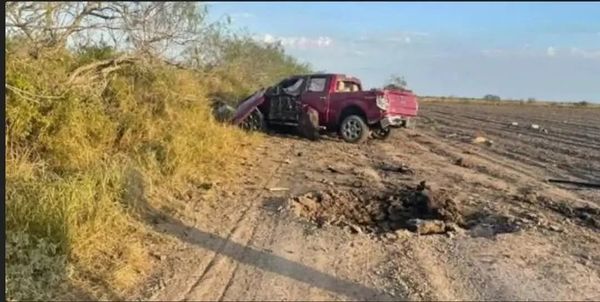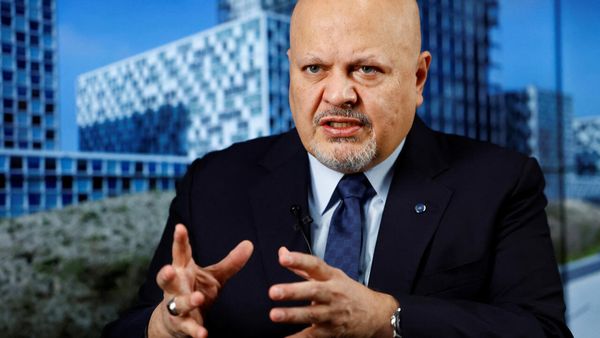Pregnant women in rural locations across Australia are missing out on ultrasounds due to a shortage of services available, a recent study shows.
Louise Sylvia is a soon-to-be mother-of-three who has lived in the remote South Australian mining town of Roxby Downs for the past 10 years.
During all three of Ms Sylvia's pregnancies she has made the 500-kilometre trip to Adelaide with her partner to receive the periodic prenatal medical scans.
But she said maternity services in the town had improved since her first pregnancy, when there were no ultrasound services available at all.
"We now have an ultrasound service that comes up but I think it's only sort of standard services they can offer such as growth and the initial pregnancy ultrasound," Ms Sylvia said.
"So if you've had any complications like I've had, I think things could possibly be missed or you need that next level of expertise so you do have to travel further."
Soaring travel costs
Now at 28 weeks' gestation, Ms Sylvia has made six trips to Adelaide for pregnancy scans.
"My husband and I worked out this pregnancy alone we’re probably upwards of $10,000.
"Just with travel costs and then because I have had to have specialised scans, which add on extra costs as well.
"We do go private but I think for the level of care that I’ve needed we sort of required to be under an obstetrician."
Staying with family in Adelaide is not an option, as Ms Sylvia and her partner moved to South Australia from interstate.
"It’s a lot because our eldest son is in school. We all have to go and we’re still at a point where you can’t take the children into scans, so my husband has to have time off and that’s time away from school," she said.
"The travel is huge with fuel costs at the moment and we don’t really stay with friends because there’s four of us so we have to find accommodation as well."
Ms Sylvia said she was not eligible for the Patient Assistance Transport Scheme (PATS) subsidy to cover travel costs as she opted for a private obstetrician as her pregnancy was deemed high-risk.
The PATS scheme is available to patients who are referred by a GP or approved medical specialist.
"I feel like it’s slowly improving with what we’ve got now from what I had in my first pregnancy," she said.
"I just think it’s a shame that we fall pregnant here and that comes with a big financial side to it."
Nationwide problem
A national survey lead by University of South Australia researchers Amber Bidner, Associate Professor Nayana Parange and Professor Eva Bezak found a lack of ultrasound equipment and training for rural clinicians had contributed to higher death rates and fetal abnormalities in remote regions across the country.
The research found maternal and perinatal death rates in remote areas are double compared to metropolitan sites, as a result of rural clinicians not having the opportunity to advance their practice to provide the service.
Research project manager Amber Bidner said up-skilling clinicians would ensure patients could avoid unnecessary costs by having access to the service.
"Especially some of the more remote women. [Many] are living in areas where they have to travel potentially hours to days, up to four days, with travel and accommodation required just to access an imaging department to have an antenatal ultrasound done throughout pregnancy."
Formal radiology 'not feasible'
According to the Flinders and Upper North Local Health Network (FUNLHN), the closest formal radiology service to Roxby Downs is in Port Augusta.
In a statement, the FUNLHN said a private sonographer visits Roxby Downs on a weekly basis to provide basic ultrasound services to the community from a private medical centre.
"We understand access to specialised services is a challenge in remote areas and we welcome advances in Telehealth technology, including tele-ultrasound solutions, which may in the future help to bridge the access gap for women living in remote South Australia.
"Even with this new technology however, we expect travel would still be required for highly specialised pregnancy imaging.
"Establishment of formal radiology services capable of complex diagnostics in remote locations is not feasible at this stage due to limited demand."
Chronic shortage of sonographers
Ms Bidner said a shortage of sonographers in rural areas has been an issue in Australia for more than a decade.
"In metropolitan areas women have ready access to imaging departments that are resourced by trained sonographers and radiographers that can provide reports quite easily – remote areas don't have this."
"One third of remote centres simply just don't have an ultrasound machine available.
"Having the equipment is essential but it's the training to use the equipment as well that we need to get to the healthcare workers.
"There is no legislation surrounding the use of ultrasound, any clinician can get an ultrasound machine and start using it but without proper training there are potential problems with using it without training."
Ms Bidner said training frontline doctors and nurses to perform basic ultrasound care could help remote clinics that rely on fly-in fly-out professionals as well as those that offer no formal ultrasound services at all.
She said online training could also be an option to educate clinicians in remote locations with a limited workforce.
"In many cases women aren't getting any imaging done," Ms Bidner said.
"Training up these frontline healthcare workers to be able to do some basic ultrasound scans really makes a difference in being able to establish if it is a high-risk pregnancy.







